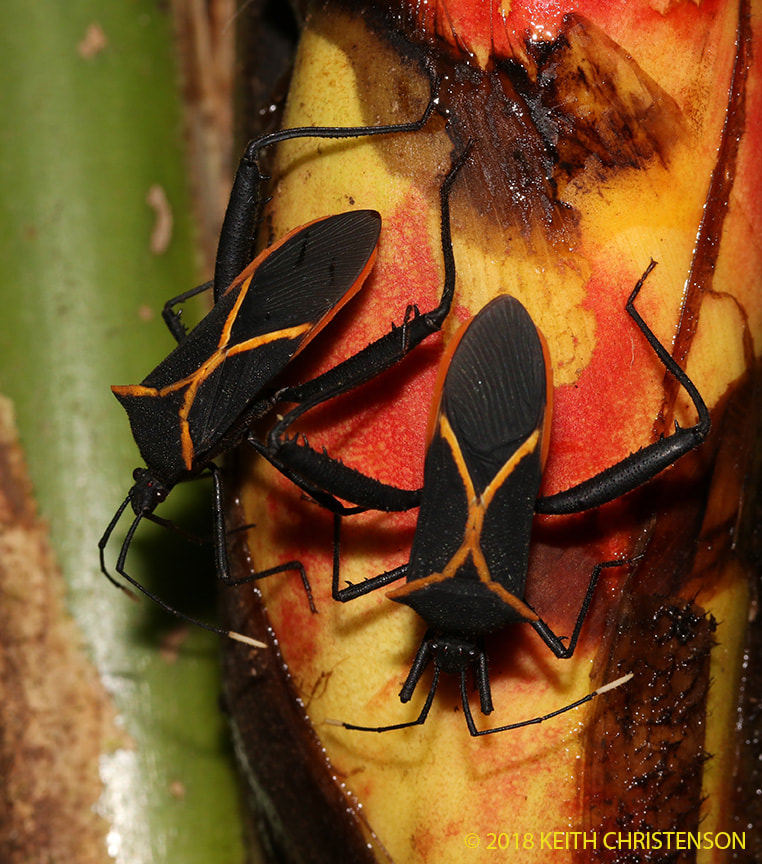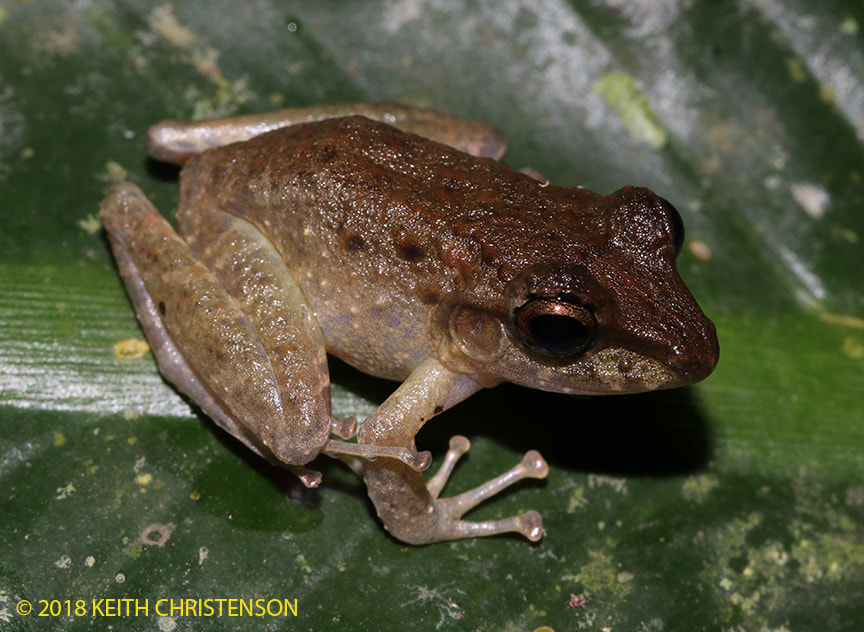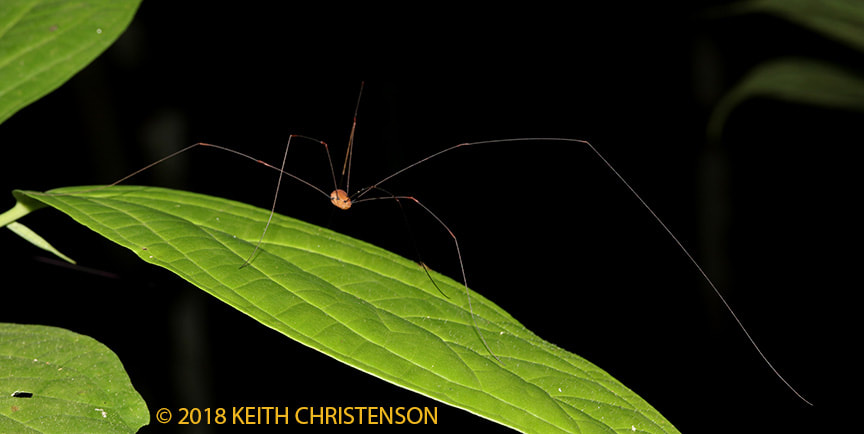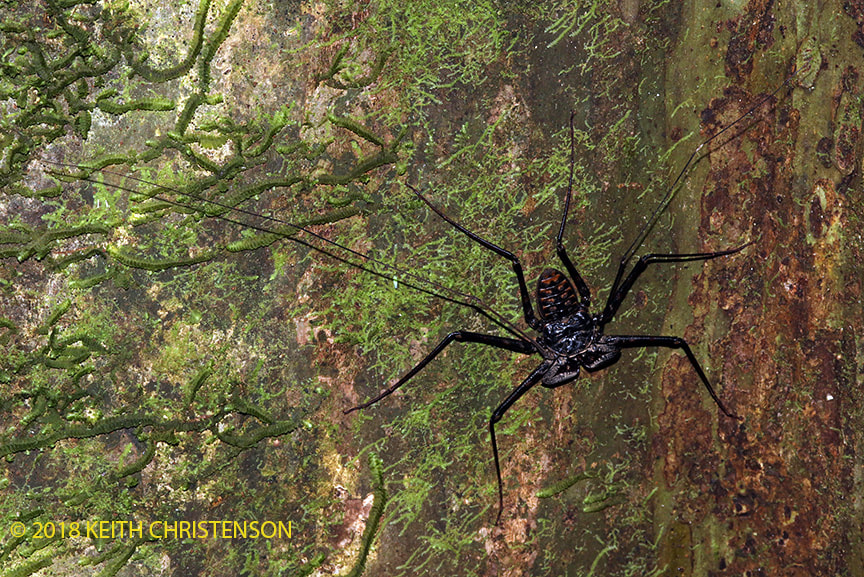These are known as Heliconia bugs, and are, not surprisingly, true bugs that live and feed almost exclusively on the plant Heliconia. I see them every year in one patch along the river and they were there again this year. Attractive bugs that are territorial on the plant and males will defend their turf. If another bug approaches things can quickly escalate into a weird reverse wrestling match. The two bugs turn around and grapple backwards using their strong rear legs. Not sure how the winner is determined but something about who can jam their legs spines into the other one's belly the hardest and make them give up.
There are two genera of these here, Phrynus and Paraphrynus, but you have to put the front spiny part (the pedipalp) under a microscope just to see a little obscure almost spine in order to figure out which genus it is. So no ID other than family on this character.
The body is about two inches long, so not a particularly huge one but decent sized. However the legs are very long and this animal would easily be 10 inches from leg tip to leg tip.






 RSS Feed
RSS Feed